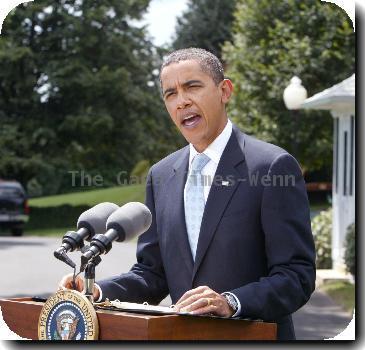Obama gearing up effort to boost Americans’ retirement savings via auto IRA, other measures
By Dave Carpenter, APThursday, January 28, 2010
Obama makes auto IRA, retirement savings a focus
President Barack Obama is launching an effort to help Americans save more for retirement, hoping a government nudge or two can get them to do what many are unable to do on their own.
The package includes programs to guarantee all workers access to a retirement plan through their jobs; expand the tax credits that reward saving for retirement; and tighten 401(k) regulations to make them safer and more efficient.
Most of the proposals have broad support at a time when retirement security is increasingly in jeopardy. Pensions are rapidly disappearing, 401(k) balances have taken hits and nearly half the work force has no way to save at work.
The centerpiece of the push, the so-called automatic IRA, appears to have particularly strong backing. This would require employers who do not offer a retirement plan to enroll their employees in a direct-deposit individual retirement account unless the employee opts out.
Other elements are sure to run into resistance. The most likey to be controversial is a proposal to encourage people to turn over part of their retirement savings in order to get an annuity or some other form of guaranteed lifetime income. The total costs to the government, not yet known, could be an issue too.
No one questions the urgency of Americans needing to put aside more for retirement. The personal savings rate has been declining for two decades, dropping to nearly zero before the 2008 meltdown prompted an uptick that may or may not last. Many families are finding it especially hard to save in economically turbulent times.
“It’s not just lower-income people whom we need to provide incentives or help for,” said Annamaria Lusardi, director of the Financial Literacy Center at Dartmouth College. “The shrinking middle class also finds it difficult to afford a comfortable retirement. These initiatives should help both.”
The White House circulated the proposals this week, and the president touted them briefly in the State of the Union address. He pledged that the administration will make it “easier to save for retirement by giving access to every worker a retirement account and expanding the tax credit for those who start a nest egg.”
Architects of the automatic individual retirement account plan said it will be included in Obama’s proposed budget next week and could be adopted quickly. It targets the approximately 78 million workers whose employers don’t offer them a retirement plan.
Legislation proposing auto IRAs was introduced in Congress in 2006 but languished.
“This is a common-sense, non-ideological and noncontroversial solution to a serious problem,” said David John, principal to the Retirement Security Project, a nonprofit research organization in Washington which is helping to draft the auto-IRA bill.
Taken together, the administration believes the retirement security measures would dramatically increase Americans’ retirement savings.
Here are more details of the main initiatives and some early reactions:
AUTOMATIC IRAS
Employers that do not offer a retirement plan would be required to offer workers the option of having money automatically deducted from their paycheck and deposited into an IRA. Workers’ contributions would be steered into a basic investment option. They could opt out if they wish.
Employers would receive a tax credit for offering the IRAs, to offset any related administrative costs.
Auto enrollment has been shown to sharply increase participation in retirement plans, according to the Retirement Security Project.
“It’s crucial that Americans have the ability to save for their retirement from the day they go to work until the day they retire,” John said. “The automatic IRA fills in the gaps.”
AARP, the advocacy group for people age 50 and over, quickly endorsed the idea.
SAVER’S CREDIT
The retirement savings tax credit, also known as the saver’s credit, is currently a way to reward lower-wage earners who sock away retirement money. It is staggered so that the lower your income, the bigger your credit, but phases out at $53,000 for married joint filers.
The administration wants it to target middle-income earners, too. It proposes to match 50 percent of the first $1,000 of contributions by families earning up to $65,000 and provide a partial credit to families earning up to $85,000.
It also wants to make it refundable, meaning you’d receive the credit even if you have no income tax liability.
“You’d receive it regardless whether you paid any taxes or not, and that’s likely to be more than a little controversial,” acknowledges John.
The government also would bear the burden of still-undetermined extra costs.
LIFETIME INCOME
Another proposal would promote the greater use of annuities and other forms of guaranteed lifetime income.
“Without a doubt, retirees are worried about health care expenses and outliving their account balances,” said Tom Kmak, CEO of Fiduciary Benchmarks, a consultant on companies’ 401(k) plans based in Portland, Ore. “Anything that encourages people to remove that risk from their retirement is a good thing.”
The public reception is likely to be mixed at best, however, given the widespread suspicion about annuities — investment products that guarantee an income stream but sometimes come with high fees.
401(K) REGULATIONS
The administration wants to improve the transparency of 401(k) fees to help workers make better choices and guard against their returns being eaten away by fees and expenses. This proposal isn’t likely to be controversial.
Tags: Barack Obama, Financial Planning, North America, Personal Finance, Personal Investing, Personal Saving, Personal Spending, State of the union, United States

